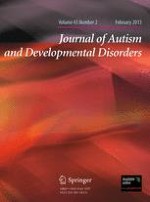01-02-2013
Recreational Participation of Children with High Functioning Autism
Gepubliceerd in: Journal of Autism and Developmental Disorders | Uitgave 2/2013
Log in om toegang te krijgenAbstract
The recreation of children with High Functioning Autism (HFA) is not well understood. The objective of this cross-sectional study was to compare the recreational engagement of children with HFA and their typically developing peers. Children with HFA (n = 30) and peers (n = 31) were similar on key characteristics that may impact recreation except those related to the HFA attributes. Children with HFA differed from peers in terms of diversity (p = .002), social aspects (p = .006) and locations (p < .001) of recreation. The two groups were not statistically different in personal intensity (p = .684), enjoyment (p = .239) or preferences (p = .788) of recreation. A recreational profile was developed to benefit parents and clinicians in supporting the recreation of these children.
